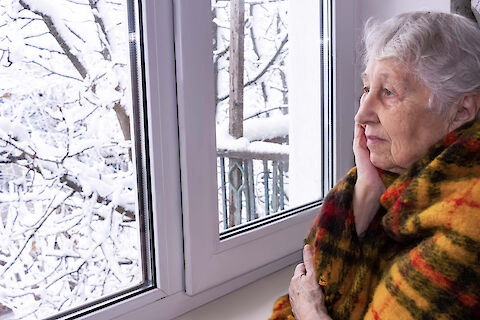
Recognizing the early symptoms of Seasonal Affective Disorder (SAD) in seniors can play a pivotal role in effective management of the condition and the overall well-being of your loved ones. As family caregivers, you hold a crucial responsibility to stay alert to any shifts in behavior, mood, or general health.
Senior Helpers Bergen County will provide you with an understanding of what SAD is, how it manifests itself in seniors, and most importantly, what the initial symptoms look like. By equipping yourself with this knowledge, you can ensure you are ready to take the necessary steps at the earliest signs of SAD.
Understanding Seasonal Affective Disorder (SAD)
Seasonal Affective Disorder, or SAD, is a type of depression that impacts individuals on a seasonal basis. It typically occurs in the fall and winter months as the days shorten. In seniors, SAD can be particularly challenging to identify. Its symptoms often resemble those of typical aging or other health conditions.
SAD generally starts subtly, and then intensifies as the season progresses. The key to managing it effectively lies in recognizing the first signs and symptoms and initiating appropriate intervention.
Recognizing the First Symptoms of SAD
The initial symptoms of SAD in seniors may include feelings of sadness or despair, low energy levels, trouble sleeping, loss of interest in activities they once enjoyed, and change in appetite or weight. Since these signs can be easily mistaken for other health issues, paying close attention to shifts in behavior, mood, and physical health during the colder, darker months becomes crucial.
Early recognition and treatment of SAD can significantly reduce its impact on a senior's health and quality of life. Family caregivers should be vigilant to changes and seek professional help if symptoms persist or worsen.
Staying Alert to the Initial Signs of SAD in Seniors
As a family caregiver, it is important to stay observant and monitor seniors for signs of SAD. Keep a close eye on any changes in behavior or disposition. Be active in communicating with them about their feelings and experiences. Maintain a stable and supportive environment to help them feel secure and understood.
If SAD symptoms are observed, the first step is to consult with a healthcare professional. They can provide a proper diagnosis and guide you on the necessary steps towards treatment and management.
How Senior Helpers Bergen County Can Help
Senior Helpers Bergen County specializes in assisting seniors and their families in times of need. Our team of professionals has the expertise and resources to help manage and alleviate SAD symptoms in seniors. Our services ensure seniors feel supported and maintain the quality of life that they deserve.
Get Support for Your Senior Loved One From Senior Helpers
Recognizing and addressing the initial symptoms of SAD in seniors is critical for maintaining their emotional and physical well-being. With attentive care, SAD can be managed effectively to ensure your loved ones can continue to enjoy their golden years to the fullest.
If you live in Passaic, Clifton, Fair Lawn, Paramus, or Bergen County, contact us at Senior Helpers Bergen County for support. Our team is here to help and provide the necessary assistance your senior loved one needs during challenging times.